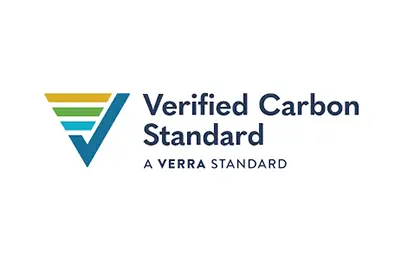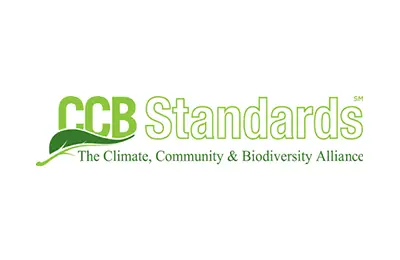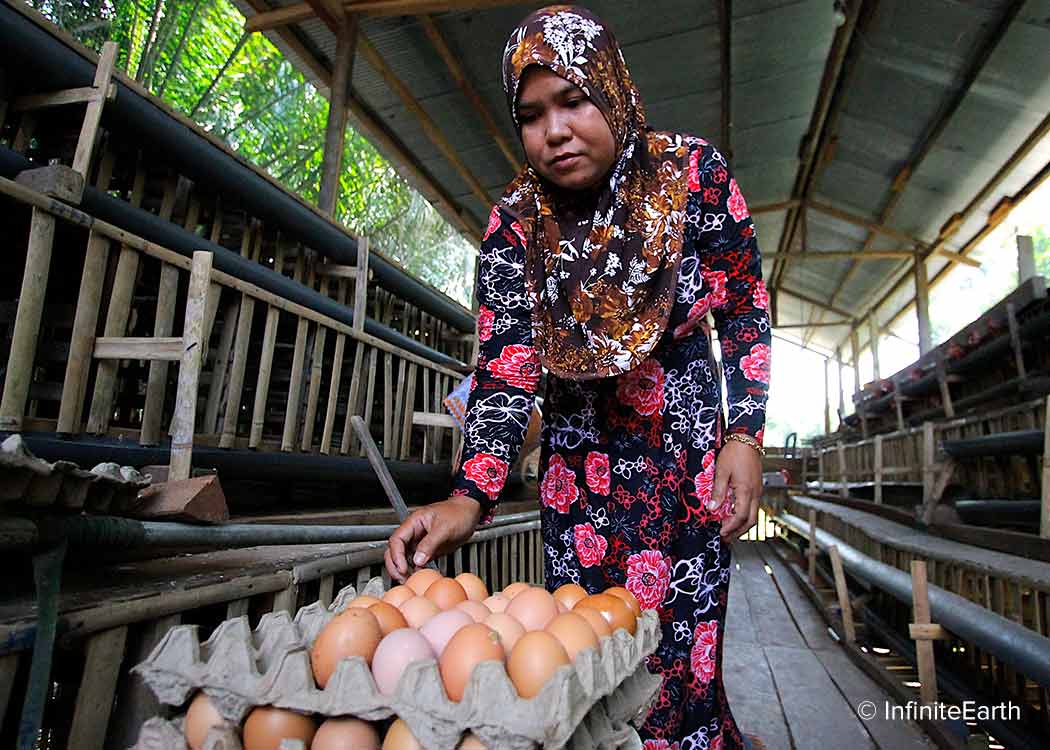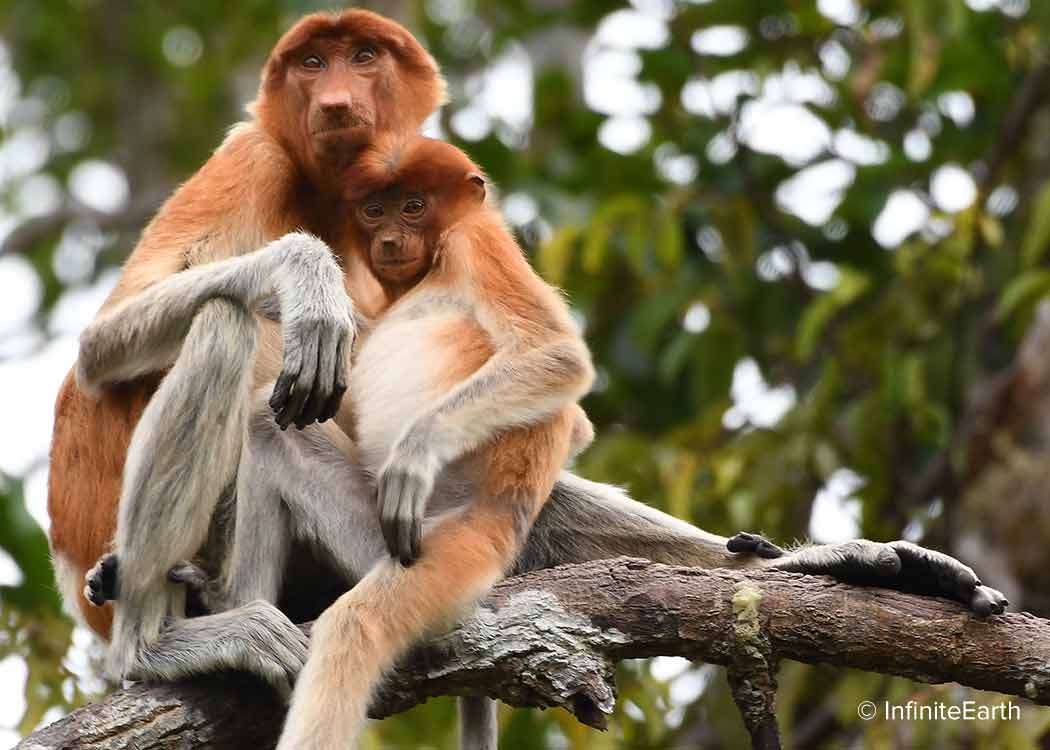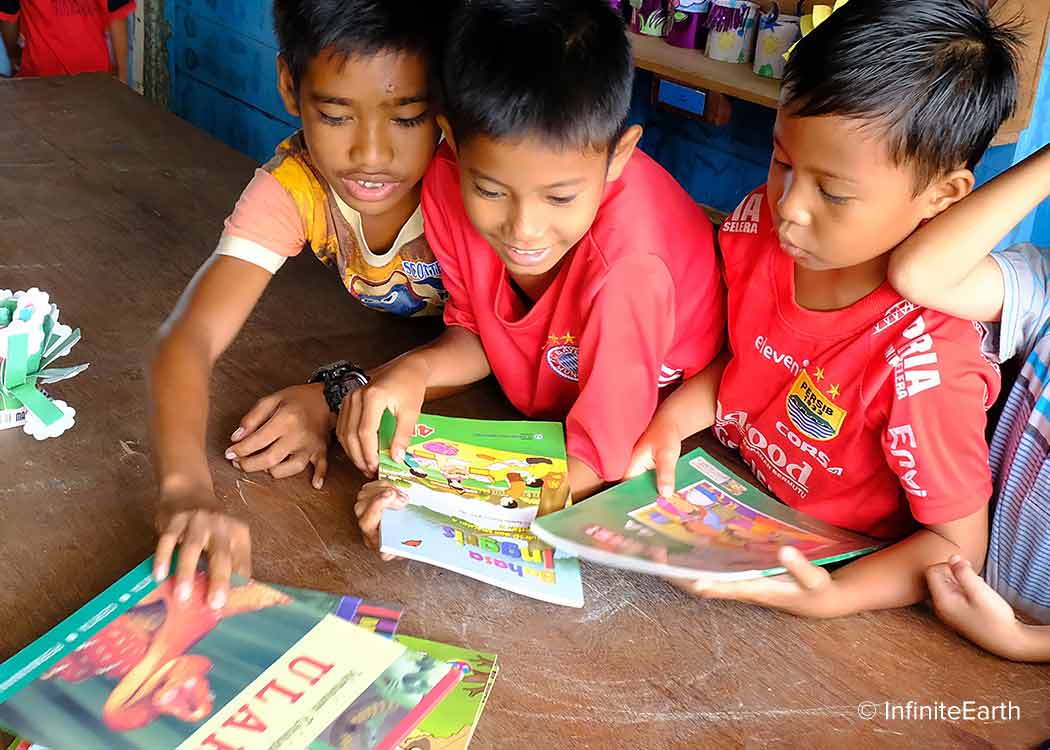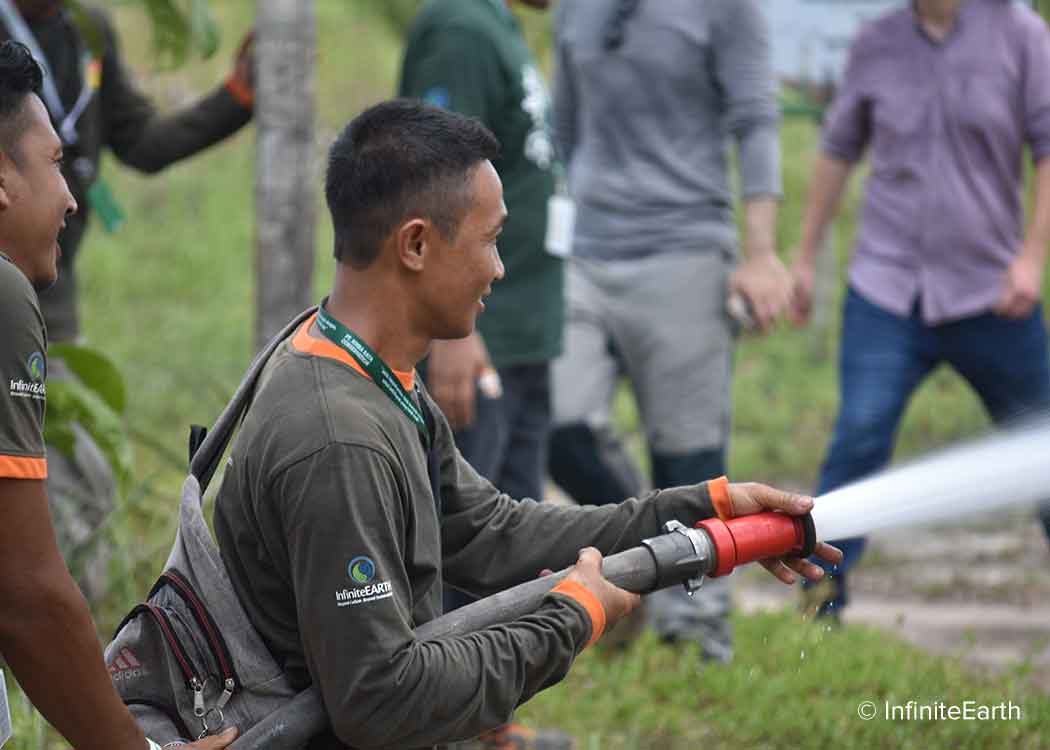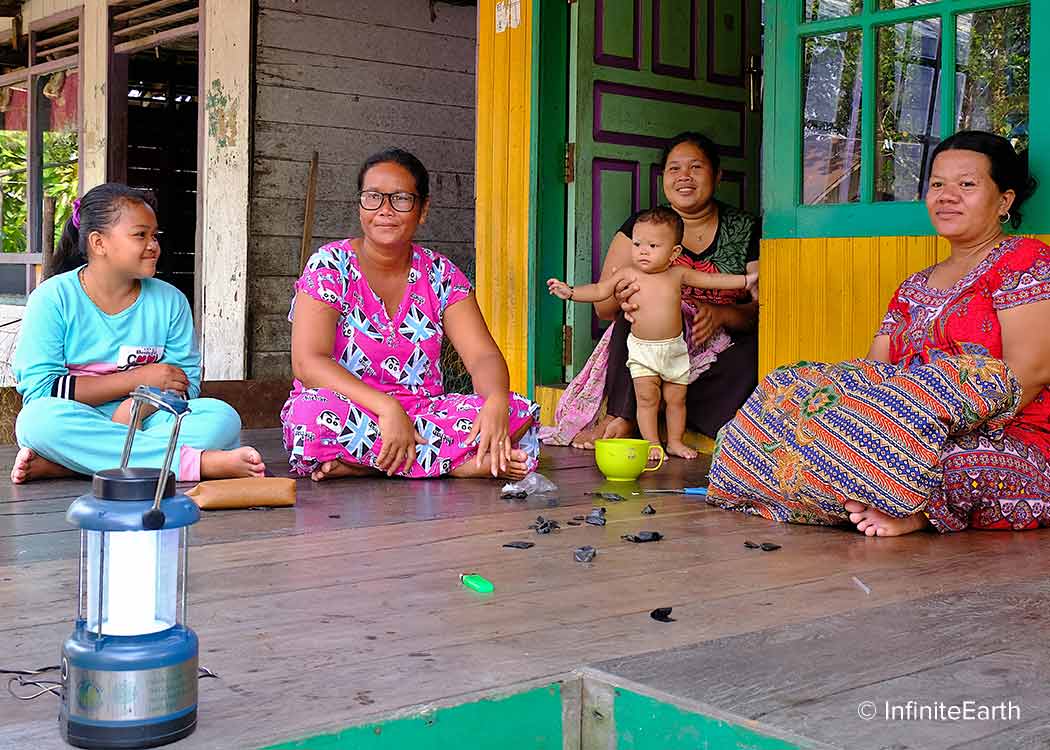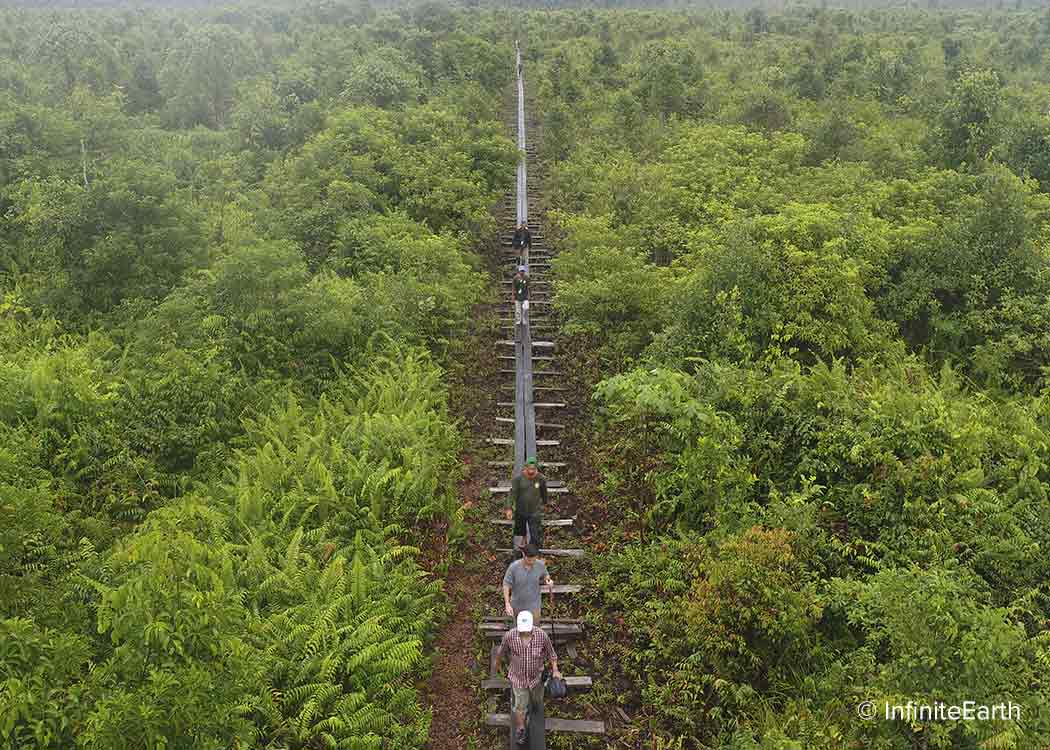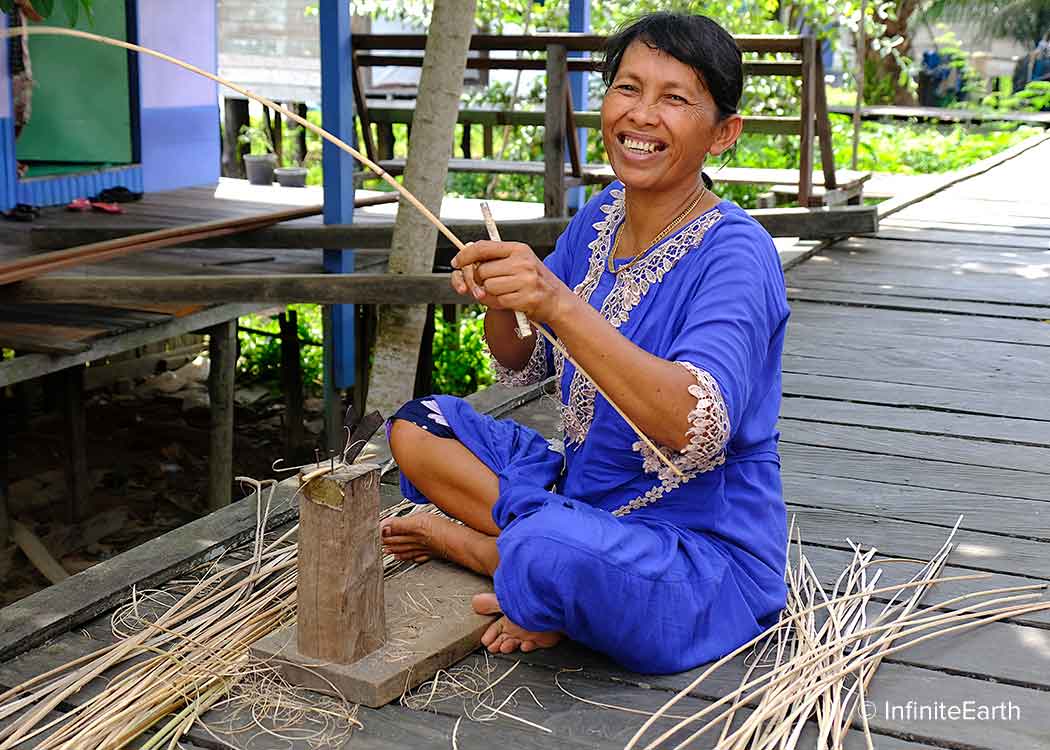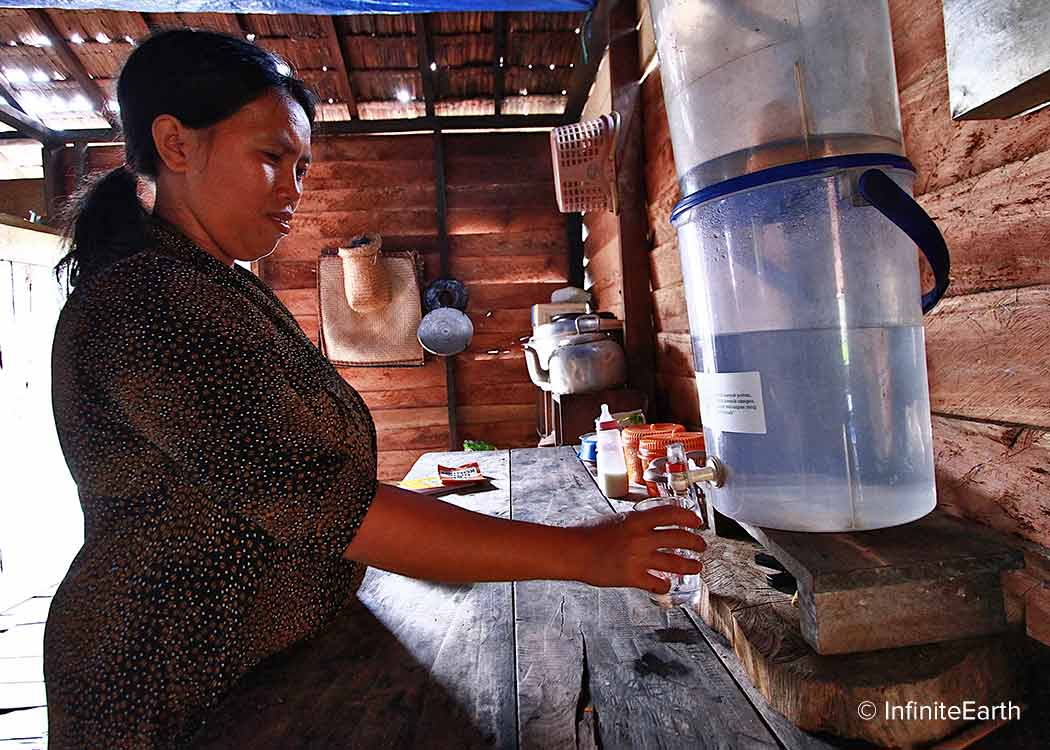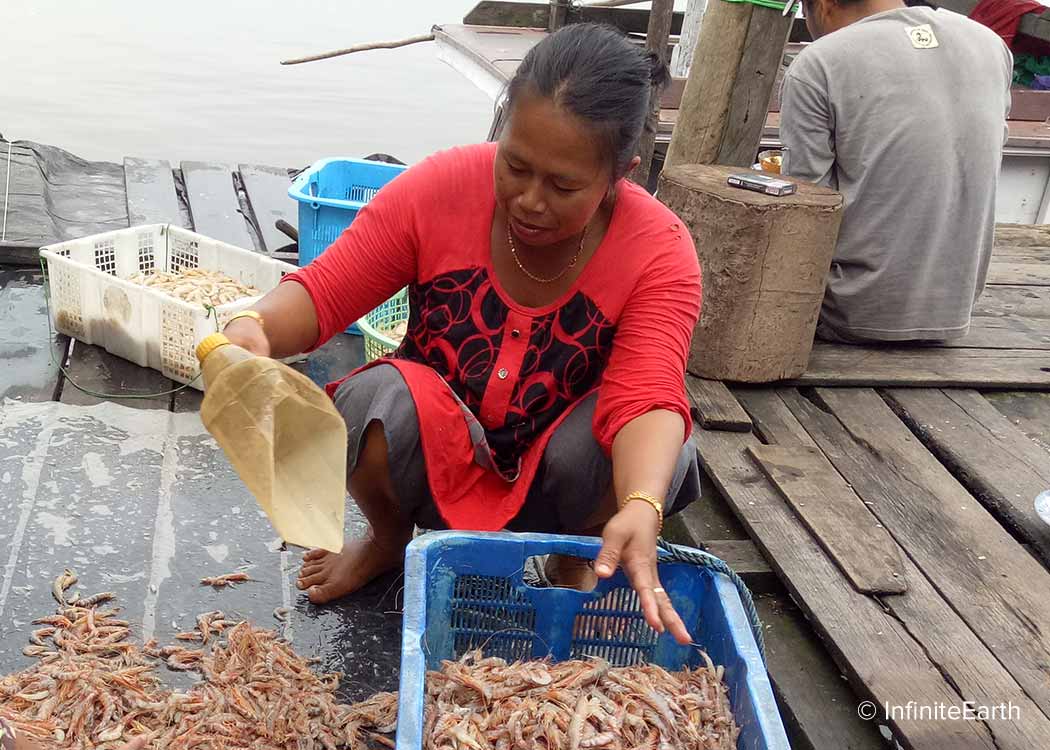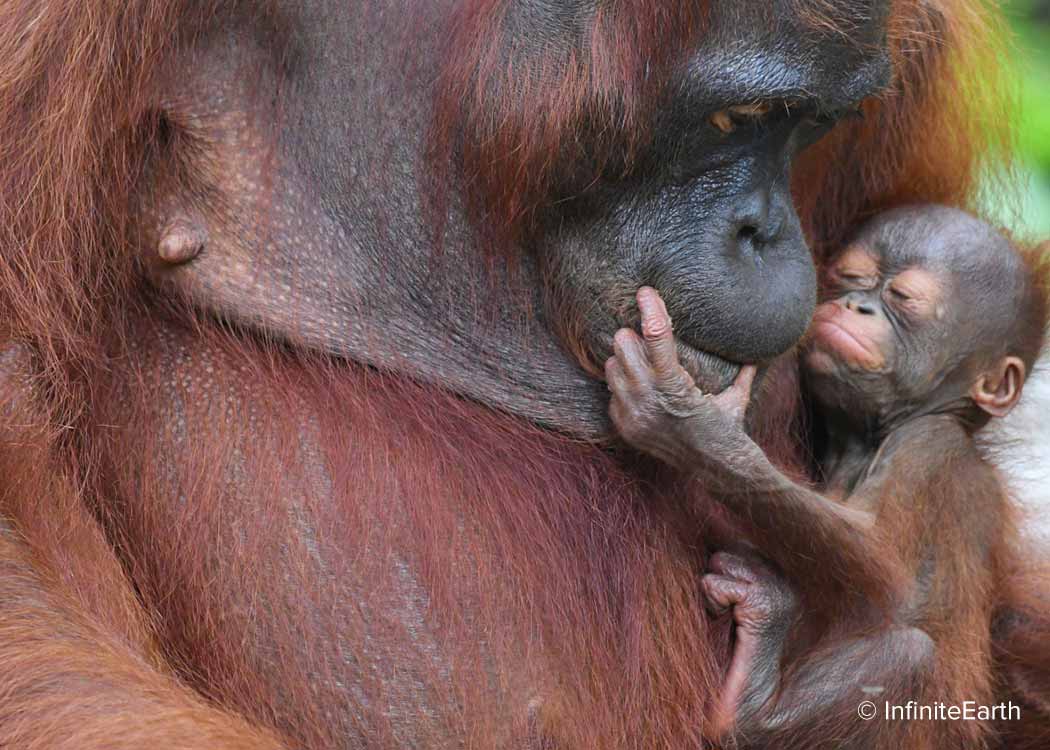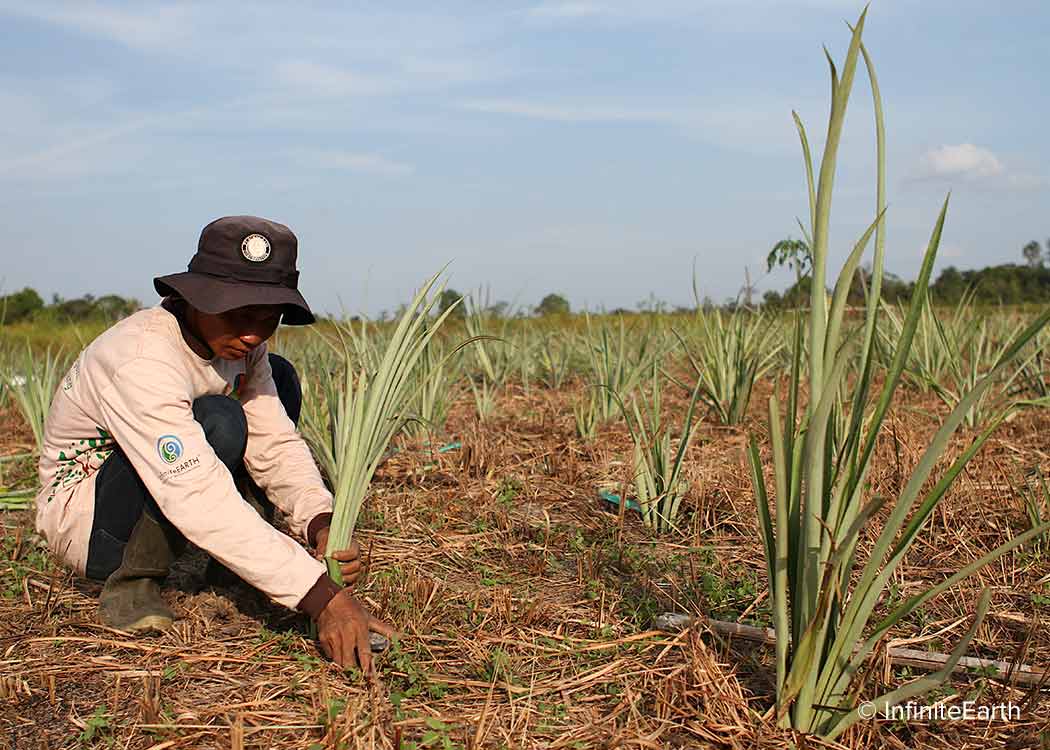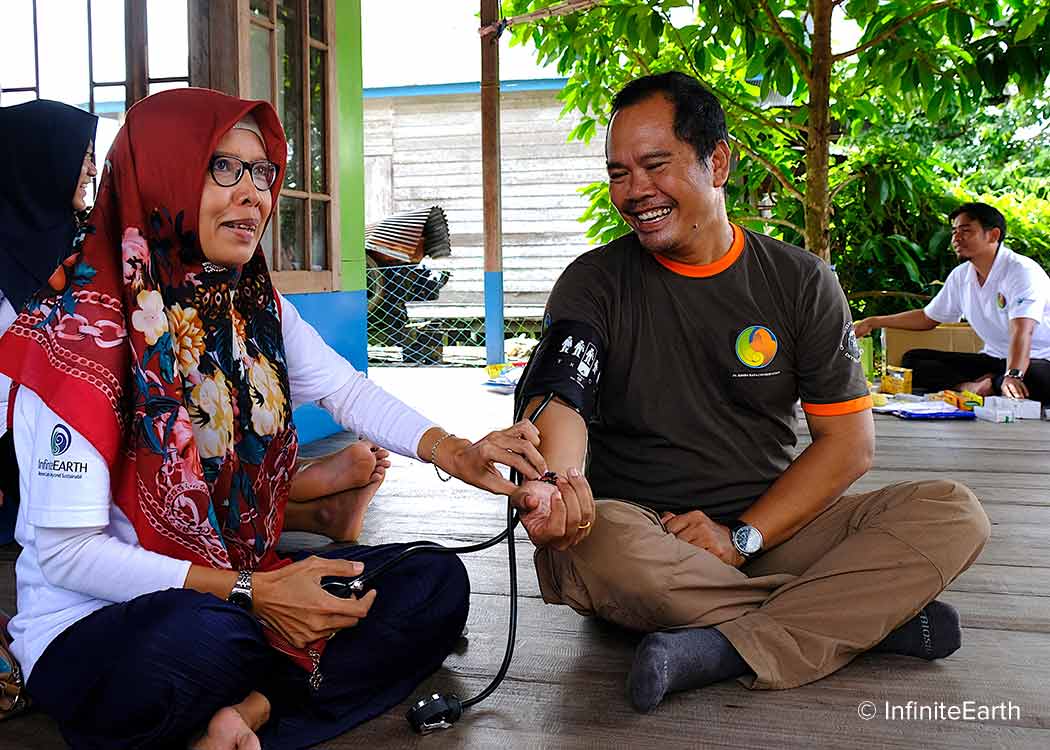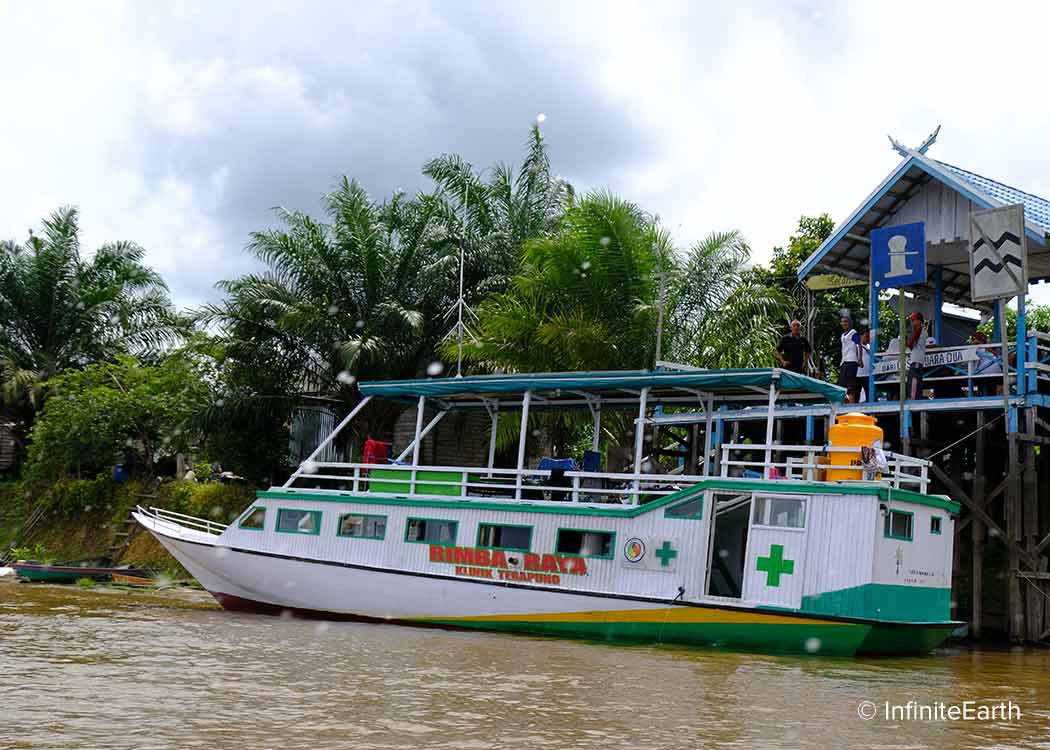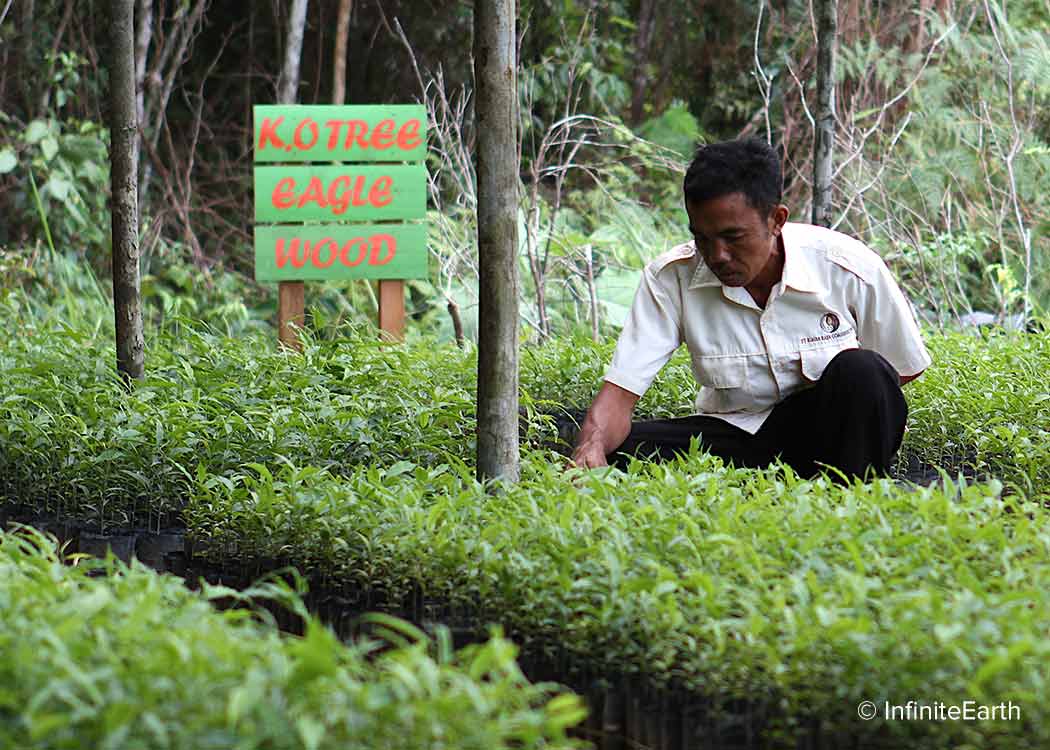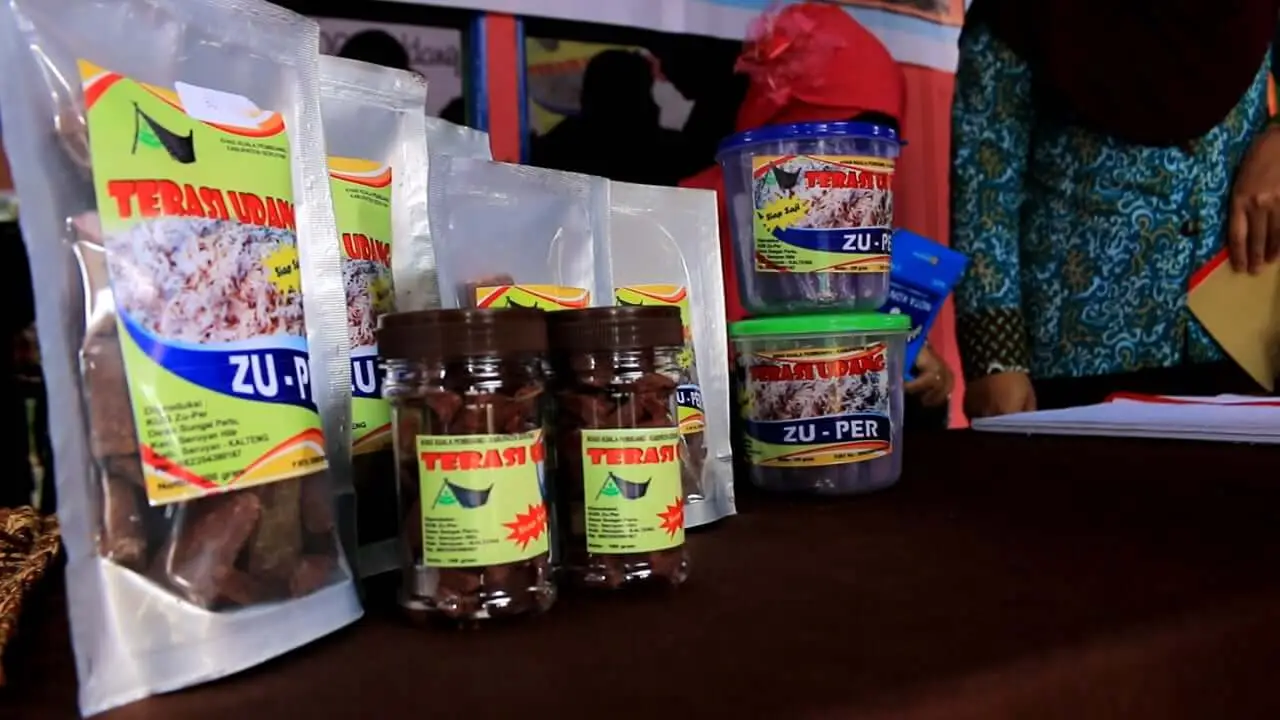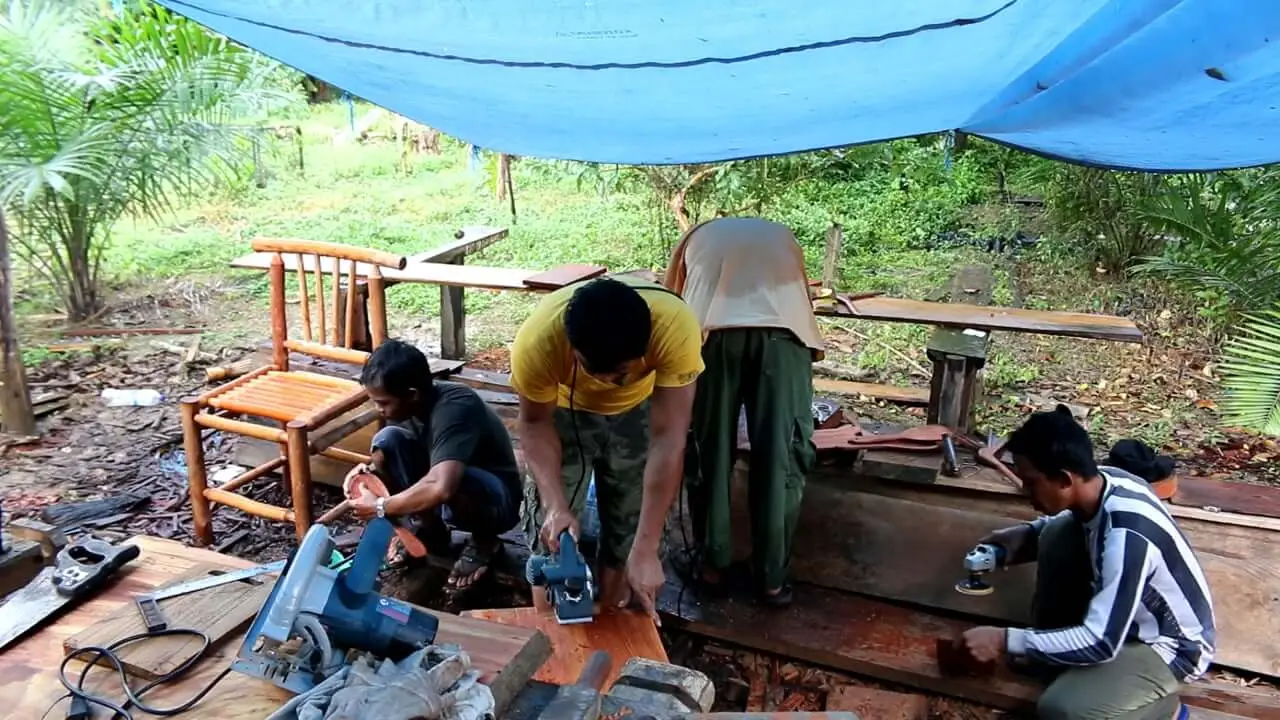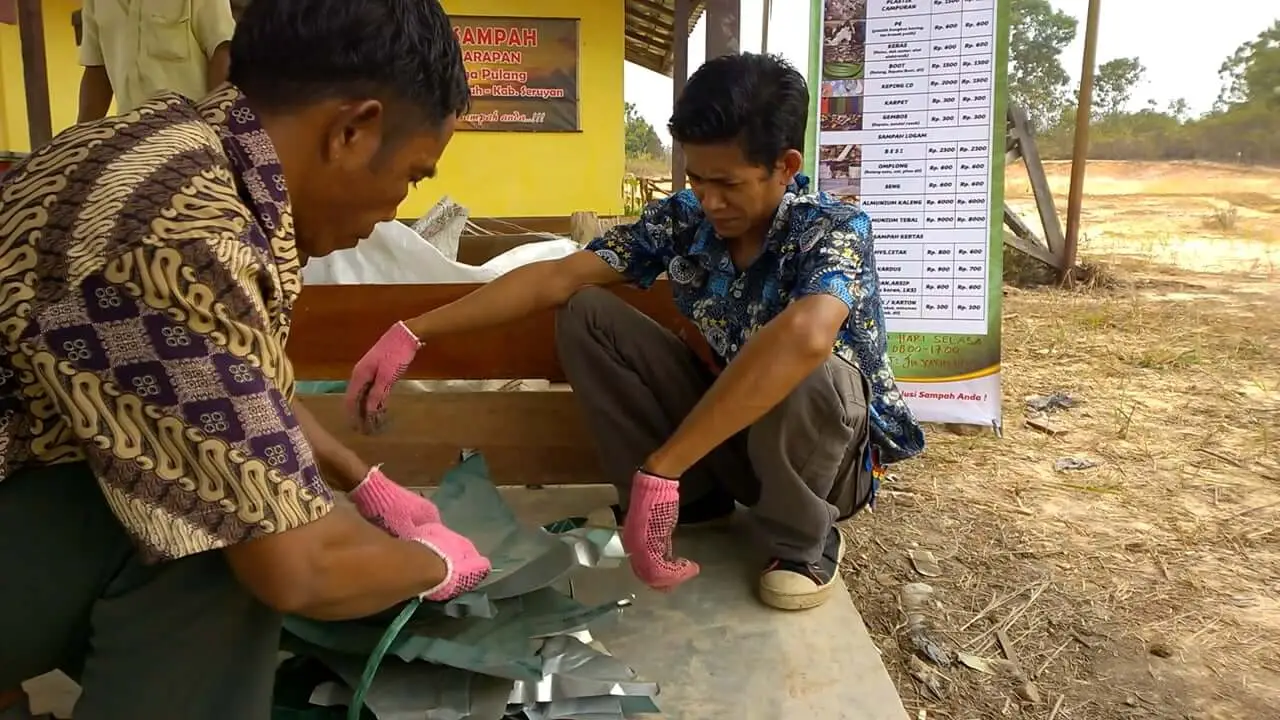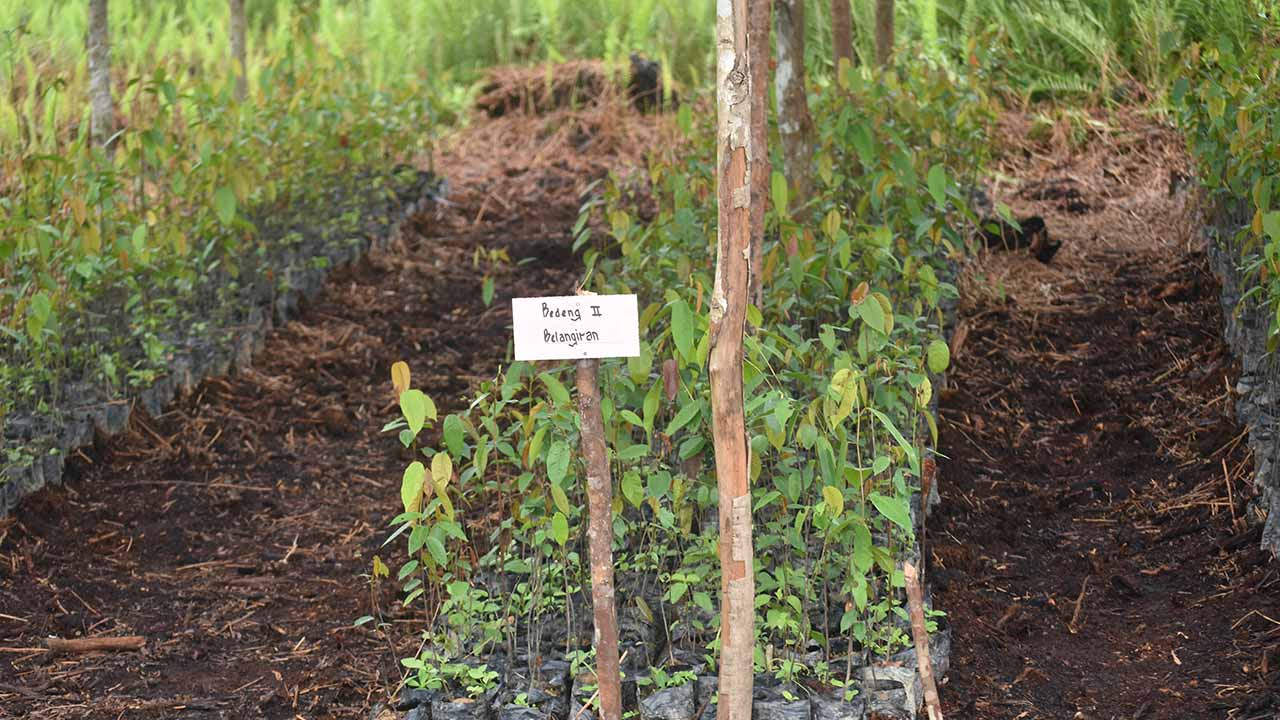This project is conserving a biodiverse peat swamp forest in Indonesian Borneo that was slated for conversion to palm oil plantations. Along with protecting this carbon rich ecosystem, the project supports the reintroduction of critically endangered orangutans into their wild habitat. By addressing issues such as poverty, hunger, and disease, the project is tackling the root causes of deforestation while improving the livelihoods of local communities. Due to its holistic approach, Rimba Raya is the first REDD+ project to be validated under the Sustainable Development Verified Impact Standard for contributing to all 17 Sustainable Development Goals.
Where & Why
Indonesia’s rainforests are a biodiversity hotspot and the tropical peat swamps in Borneo are no exception. More than 50 endangered species, including Bornean orangutans, proboscis monkeys, pangolins, hairy-nosed otters, and Borneo Bay cats, can be found in the peat swamps on the island’s southern coast.
Unfortunately, Indonesia’s critical peat swamp ecosystems are rapidly disappearing, primarily to develop palm oil plantations. After years of extensive development, Indonesia is now the world’s largest producer of palm oil. The process of converting the land to a plantation involves logging and burning the trees and subsequently draining the peatland. As this happens, the massive amounts of carbon that are stored in the aboveground biomass and the deep layers of peat is released into the atmosphere. The draining of the peat swamps also leaves them far more vulnerable to fires. Fires set for agricultural purposes often get out of control, causing further devastation to Indonesia’s peatlands. Between 1990 and 2005 Indonesia lost about 2% of its forest cover annually.
As Indonesia’s peat swamp habitat disappears, so do the animals that depend on it. It is estimated that palm oil development results in the deaths of around 1,000 to 5,000 orangutans every year. Over the last half century, substantial loss and fragmentation of their habitat has led Bornean orangutan populations to decline by 95%.
Luckily, there are efforts underway to protect Indonesia’s orangutans and other vulnerable species. In Borneo, the world-renowned Tanjung Puting National Park houses one of the largest protected orangutan populations and Orangutan Foundation International leads ongoing orangutan conservation activities.
Wild animals are not the only beings affected by the loss of Indonesia’s peat swamps. Indigenous communities lose access to their land and resources, sometimes without their consent. Once their land has been converted, community members are left with few options but to work on the palm oil plantations where they face degrading conditions and are underpaid. Women often end up helping out on the plantations for little or no pay, and are tasked with more hazardous activities like spraying pesticides without protective gear. The development of palm oil plantations can also cause other harmful impacts for nearby communities, such as flooding, pollution of their water sources, and exposure to smoke from fires.
How & Who
This project is protecting over 90,000 acres (36,000 hectares) of primarily peat swamp forest on Borneo’s southern coast between Tanjung Puting National Park and the Seruyan River. This particular area was slated by the government for conversion to palm oil plantations. By obtaining the land rights and establishing the Rimba Raya Biodiversity Reserve, the project prevented this destruction from happening. Along with safeguarding the ecosystem within the project boundaries, the Rimba Raya Reserve also acts as a physical buffer zone for Tanjung Puting National Park, preventing it from encroachment and exploitation.
Even with the reserve in place, peat fires, illegal logging, and encroachment by oil palm plantations still present very real threats. The project is taking steps to prevent and respond to these threats earlier by building a network of guard posts and fire towers, establishing fire breaks, funding daily patrols, and acquiring airboats and other equipment designed for combatting peat swamp fires. Local community members will be trained and hired as guards and fire fighters to support these activities.
The project will also regenerate areas that were previously degraded. Nurseries will be created to produce native seedlings and villagers will be paid to plant them. An agro-forestry program will also be launched as part of these rehabilitation efforts. The fruit, nut, spice, and rubber trees will generate income and provide a reliable food source for communities as well as orangutans. To date, over 300,000 trees and 20,000 mangroves have been planted in the reserve.
Funds will also be used to support Orangutan Foundation International’s ongoing orangutan rehabilitation and release activities. This includes the reintroduction of 300 rehabilitated orangutans back into the wild. Three new orangutan release centers and six feeding platforms will be constructed within the Rimba Raya Reserve to provide a staging ground for their migration into the national park
Along with protecting the land itself, the project is also addressing the root causes of community-based deforestation in neighboring villages. Most villagers earn their living from fishing in the Seruyan River, but increased flooding has caused fishing yields to decrease in recent years. Many community members live in extreme poverty, unable to afford the day-to-day cost of living.
Beyond the employment opportunities noted above, the project is creating alternative livelihood opportunities that will provide residents with a sustainable income stream. The project is building the capacity of local people, particularly women, to take on livelihoods in chicken farming, shrimp paste production, and handicrafts. Microloans provided by the project will remove the financial barriers that typically prevent those living in poverty from starting their own enterprises.
Along with supporting new income generating opportunities, the project also is also improving local quality of life by:
- Implementing a floating clinic that can deliver medical services to communities up and down the Seruyan River who do not have access to healthcare facilities.
- Distributing clean water filters to families and installing village-level water purifying systems to reduce deaths from waterborne illnesses.
- Providing clean cookstoves that require half the amount of fuel wood as traditional stoves and generate less smoke and indoor air pollution.
- Increasing access to education by providing scholarships to high school students, creating village libraries, and distributing reading glasses to community members with vision impairments.
- Increasing production of fruits, vegetables, and fish by training farmers on sustainable production practices, providing aquaponics systems, and developing plantations of pineapples and other crops.
- Providing solar lanterns to families and installing large solar generator systems in villages that lack electrification.
- Organizing cleanups and establishing a recycle bank to reduce pollution in villages and enhance the water quality of the Seruyan River.
By maintaining the reserve and tackling social issues such as poverty, hunger, and disease, the Rimba Raya project ensures that environmental conservation and community development go hand-in-hand.
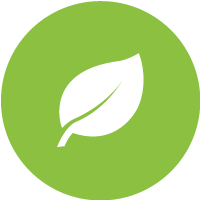
Environmental Benefits
- Mitigates climate change by protecting and rehabilitating peat swamp forest
- Safeguards the habitat of more than 50 endangered species
- Supports orangutan rehabilitation and release efforts
- Improves the water quality of a critical river ecosystem
- Lessens erosion and flooding
- Increases use of renewable energy

Community Benefits
- Provides employment for over 70 people
- Supports the development of new livelihood opportunities
- Provides community members with increased knowledge and skills
- Increases local food security
- Builds the agency and capacity of women
- Promotes improved literacy and education
- Improves community health by promoting a well-rounded diet, reducing pollution, and improving access to clean water and healthcare.
- Increases electricity access in rural areas
Project Type
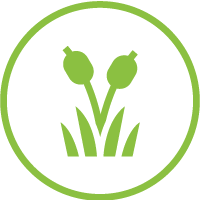
Blue/Teal Carbon
Location
Annual CO2 Reduction
3,527,171 MT CO2e (expected annual average for crediting period)
SDGs Supported
Verification Standard
Project Developers
InfiniteEARTH
Project Documents
News & Stories
Offset Your Travel Footprint
Calculate and offset the carbon footprint of your flight in seconds via our online carbon calculator! Already know your carbon footprint? Click the option to “offset now.”



















